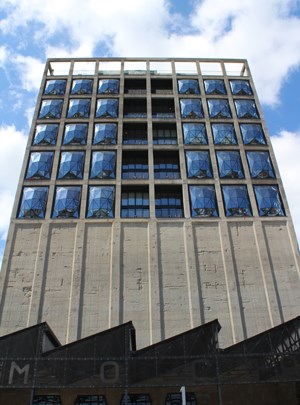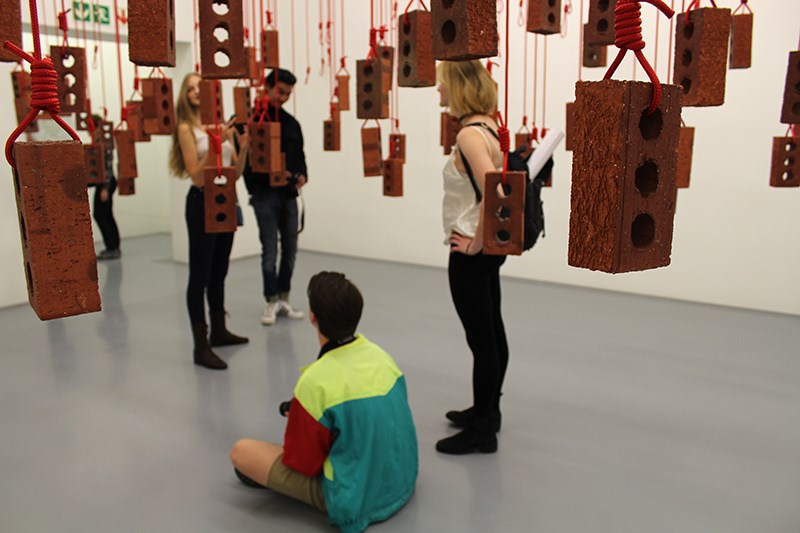
Top stories




EducationHow gender-inclusion in higher education can transform Africa’s future
Meekness Lunga-Ayidu 17 hours

LegalNigeria to implement new tax laws from January 1 despite calls for delay, Tinubu says
Camillus Eboh 2 days

There is no denying that the museum has received a fair amount of criticism, particularly from the South African art community, during the nine-year long process from inception to fruition. Most of these criticisms centre around the fact that there is a lack of diversity on the board and that it previously hasn’t engaged enough with the local art community. The main players; German Jochen Zeitz, former Puma CEO and the primary benefactor and owner of the majority of the permanent collection, Mark Coetzee, chief curator and British architect Thomas Heatherwick who converted the original grain silo dating back from the 1900s into the awe-inspiring museum it is today are all white men, supposedly approaching the museum with a euro-centric point of view.


However, Rachel Davis from the Daily Maverick presents a more balanced view in her article Zeitz Mocaa: Cape Town’s new art museum stuns and provokes
"Much of the criticism of the Zeitz Mocaa project up till now has seemed fairly vague and ill-defined. That it is “elitist”; that it too closely mirrors similar museums in the West; that it has not “engaged closely” with local artists and galleries. It is hard not to feel that some of this comes down to parochialism, envy and snobbery …”
With such a formidable institution now taking up such a large space on the future landscape of African art, as well as the mapping of Cape Town’s major attractions, it would be unusual for it to not receive criticism and invoke debate.

Mark Coetzee had the following to say about certain criticisms the museum has received:
As an institution, it’s very important for us to encourage dialogue, debate and criticism – if you are going to build an institution like this and not get comments which are both positive and negative, there’s something wrong. You have to be strong enough to say, if we believe in the diversity of people and opinions, then we must believe that the responses must also be diverse. You have to go with the flow, sometimes people build you up, and sometimes you get punched. I say to my curators constantly that if everyone loved us or everyone hated us then we would have a problem.Criticism towards a singular voice or agenda being broadcast have also proven to be generally unfounded. The museum currently employs and consults over 21 curators with plans to increase this number to 39. The temporary exhibitions need to be vetted by the exhibition committee (made up of 30 people including curators, registers and staff) who decide if the proposal fits in with the museum’s objectives. Once this is approved, the curators have free reign over the artists and works chosen.

Currently there are 12 temporary exhibitions on show for the opening, featuring over 60 artists and roughly 230 works. Noteworthy works include Kendal Geers’ Hanging Piece, an entire room filled with bricks hung from the ceiling from red nylon rope which forces the viewer to duck and weave their way through the space. In the Midst of chaos, there is opportunity, Mary Sibande’s life-size sculpture installation is also a formidable piece and a must-see exhibit, while Mouna Karray’s arresting photographs in Off the Air, as part of the Roger Ballen Foundation Centre for Photography exhibition, are quietly evocative. Another must-see is William Kentridge’s, More Sweetly Play the Dance, a panoramic video installation which is absorbing and powerful.

Down the line the temporary exhibitions will lessen and rotate every 100 days with a month gap in-between.
When asked if there was an overarching theme to the temporary exhibitions Coetzee responded;
No there actually isn’t, they’re all pretty contradictory and I think that’s the point of the museum, so there’s curators of painting and sculpture, moving image, performative practice, costume, installations, special projects, minority issues. There is a lot of different focuses, but they do have to work together to have an institutional development.The permanent exhibition displays Jochen Zeitz's private collection loaned to the gallery as well as acquisitions, donations and long-term loans the museum has gathered and received.

There also six institutions within the museum with particular focus; the centre for photography, the centre for education, the curatorial training centre, the moving image, performative practices and costume.
We’re building a parallel collection, which supplements his [Jochen Zeitz’s] collection, we do have a collection strategy that is synergistic. We have two acquisition committees, the one is for art and every artwork that is potentially donated needs to be analysed by the committee. I would say 95% offered is rejected as it doesn’t fit into the museum’s mission.We have realised very quickly that it’s very prestigious to be included in the collection… We have to have very strict criteria of what we collect, what period, what quality. So we collect for the right reasons and not to get involved in the market.

Zeits MOCAA is also addressing initial concerns that the museum would be exclusive to the general South African population. True, the entry fee of R180 per person would be hefty for most South Africans. However with the Museum’s Access for All programme under 18’s receive free entry and every Wednesday entry is free for anyone producing a valid African passport as well as half-price admission for all on ‘Late Night Fridays’, while a yearlong access membership only costs R250.
The institution is also taking great strides in creating “in reach” programmes that transport students from impoverished schools to the museums for guided tours and educational programmes. To date, they have partnered with 76 schools.
They have also taken great care in respecting and honouring the original grain silo and heritage building.
We’ve tried wherever possible to acknowledge the history and labourers of the building…There is a very sensitive relationship between the art, the building and the history of the building.”The curators worked closely with architect Thomas Heatherwick to best honour the building as well as best display the art. Nicholas Hlobo’s striking dragon; i impundulu zonke ziyandilandela that greets you as you enter was specifically acquired to fit that space. While Yinka Shonibare’s work, a video projection of an opera titled Addio Del Passato is fittingly housed in the pigeon poo splattered Dust House, “the third building that forms part of the Zeitz MOCAA campus which…. historically filtered the air of the adjoining industrial structures to protect the lungs of the workers and stop the building from exploding.”

Zeitz MOCAA’s main objective is to provide a stronger and further reaching voice for its African artists and in doing address noteworthy issues and uplift, inspire and provoke the community while doing so.
We are not an institution of propaganda so it’s not our role to change perceptions, it’s our role to create a platform for people who want to express their opinions about this continent and that will have the impact. I think the artists are sick and tired of being categorised as African artists and all the preconceived ideas that come with that, they want to be artists first and foremost in Africa, they want to be stakeholders, they want to have a voice, and they want their opinions heard. Our job as an institution is to create a platform for those debates to become more public, to give the artists a stronger voice and I think in that process the artists are going to change the perception.And with an institution of this magnitude, it is inevitable it will influence the general canon on how art history is written. The responsibility now of the curators and the administration board is to do that in a very responsible way. That doesn’t mean safe, maybe a responsible way is to do it is in a subversive or chaotic or anarchistic way, but we’ve got this massive voice and I think the most important thing is to keep the diversity in that voice so the museum doesn’t become authoritarian with one person’s view point, and there continues to be multiple dissenting voices that don’t agree.

The museum is open from Wednesday to Monday 10am–6pm.
To view upcoming exhibitions and events click here. For more info go to zeitzmocaa.museum